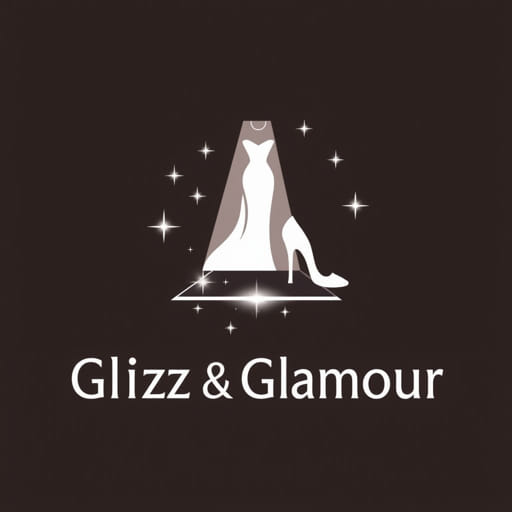What Is Glitz And Glamour
The phrases ‘glitz’ and ‘glamour’ often appear together in conversations, media, and descriptions of luxurious lifestyles, events, or fashion. They evoke images of dazzling appearances, elegance, and an alluring charm that captivates attention. But what exactly do ‘glitz’ and ‘glamour’ mean, and how do they differ? This topic explores the meanings, origins, usage, and cultural significance of glitz and glamour, helping readers understand these popular terms in everyday English.
Defining Glitz
Meaning of Glitz
Glitz refers to something that is showy, flashy, or ostentatiously attractive. It often implies a superficial or excessive sparkle, glitter, or shine that catches the eye immediately. The term ‘glitz’ tends to be associated with bright, sparkling decorations, flashy clothing, or events designed to impress through visual impact.
Origin of Glitz
The word ‘glitz’ originated in American English around the mid-20th century, likely derived from the Yiddish word ‘glits,’ meaning ‘glitter’ or ‘shine.’ It quickly became popular in describing the dazzling aspects of Hollywood, nightlife, and entertainment scenes, where the emphasis is on visual spectacle.
Common Uses of Glitz
- Describing sparkling costumes or jewelry worn at parties or shows
- Referring to events or locations known for their flashy or extravagant atmosphere
- Used in entertainment reviews to comment on the impressive but sometimes superficial presentation
Understanding Glamour
Meaning of Glamour
Glamour carries a broader meaning than glitz. It refers to a quality of charm, beauty, or sophistication that makes someone or something highly attractive and fascinating. Unlike glitz, which is mostly about shine and flashiness, glamour includes elegance, mystique, and a refined appeal that often suggests class and style.
Origin of Glamour
The word ‘glamour’ has Scottish roots dating back to the 18th century. It originally referred to a magical spell or enchantment, derived from the Scots word ‘gramarye,’ meaning ‘magic’ or ‘occult learning.’ Over time, the meaning shifted to imply an alluring and enchanting appearance, often associated with fashion, film stars, and high society.
Common Uses of Glamour
- Describing the elegant and sophisticated aura of celebrities and fashion icons
- Referring to luxurious lifestyles that combine beauty, charm, and prestige
- Used to emphasize the magical or captivating quality of an experience, place, or person
Differences Between Glitz and Glamour
Surface vs. Substance
While both terms relate to attractiveness and appeal, glitz is often associated with surface-level shine and spectacle, sometimes viewed as superficial or over-the-top. Glamour, on the other hand, suggests a deeper, more lasting charm that blends beauty with sophistication and mystique.
Temporary vs. Enduring Appeal
Glitz might be fleeting, dazzling only for a moment through bright lights or sparkling accessories. Glamour implies a timeless and captivating quality that endures beyond mere appearance, often linked to personality, style, and grace.
Contextual Differences
- Glitz is frequently linked to entertainment venues like casinos, nightclubs, or flashy award shows.
- Glamour tends to be connected with fashion, film stars, red carpets, and luxury brands.
- Glitz can sometimes carry a slightly negative connotation of being gaudy or lacking depth, whereas glamour is usually positive.
Examples of Glitz and Glamour in Popular Culture
Glitz in Movies and Events
Many Hollywood award shows, such as the Oscars or the Grammys, are described as full of glitz due to their sparkling decorations, extravagant gowns, and lavish parties. The bright lights and glittery costumes exemplify the idea of glitz as dazzling showmanship.
Glamour in Fashion and Celebrities
Icons like Audrey Hepburn, Marilyn Monroe, or modern stars like Beyoncé are often associated with glamour. Their style and presence evoke timeless elegance and an enchanting quality that goes beyond flashy clothing or accessories.
How to Use Glitz and Glamour in Everyday Language
Describing Places or Events
- ‘The Las Vegas Strip is known for its glitz and bright neon lights.’
- ‘The gala was filled with glamour, from the elegant gowns to the sophisticated décor.’
Talking About People
- ‘She added some glitz to her outfit with sparkling jewelry.’
- ‘The actress carries herself with undeniable glamour and grace.’
Using Both Together
Often, the two terms are combined to highlight both the spectacular and the sophisticated aspects of something.
- ‘The movie premiere was a night of glitz and glamour, with flashing cameras and stunning fashion.’
Why Understanding Glitz and Glamour Matters
These terms are frequently used in media, advertising, fashion, and entertainment industries. Knowing the difference can help you better interpret descriptions and critiques, and use the words more accurately in your own writing or conversations.
For instance, if you want to emphasize flashy, superficial showiness, ‘glitz’ is your choice. If you want to express an elegant, enchanting appeal, ‘glamour’ fits better. Recognizing the nuances can also help avoid unintended negative or positive impressions when describing people or events.
Summary
Glitz and glamour are closely related but distinct concepts. Glitz focuses on sparkle, flashiness, and visual spectacle that can sometimes feel superficial. Glamour is about charm, sophistication, and an alluring quality that combines beauty and elegance. Both words enrich English vocabulary when describing lifestyles, fashion, events, or personalities, capturing the allure of the extraordinary. Understanding their differences helps in choosing the right word to express the intended meaning, whether describing dazzling decorations or timeless elegance.
